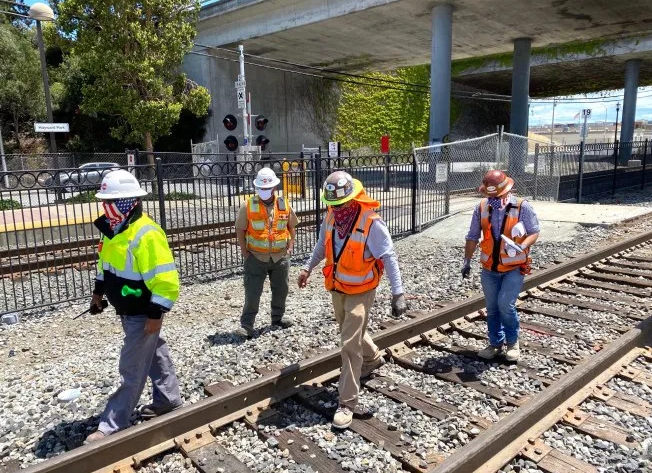The COVID-19 pandemic has slammed transit agencies across the Bay Area, with huge service reductions on BART, Muni, and elsewhere. But perhaps no agency has found itself in a more precarious situation than Caltrain. "Caltrain's finances are among the most fragile because its revenues depend heavily on fares, and its public revenues come from three partner transit agencies with budgets in crisis due to the pandemic. If solutions aren't found, one of the options--crazy as it sounds--is to shut down a line that the state is investing $2 billion to electrify, and would dump four lanes of cars onto highway 101," wrote Friends of Caltrain's Adina Levin in a recent statement.
In a presentation at Caltrain's May 7 board meeting, the ridership situation was summed up nicely in this simple graph:
"Absent a new stream of revenue from somewhere, this organization is in deep trouble," said Charles Stone, vice mayor of the City of Belmont and a member of the Caltrain Board, during the online meeting.
Even with the emergency federal CARES act relief package, shortfalls will remain. How severe they will be depends on the course of the pandemic. "With a budget that is finely balanced on strong ridership ... that presents a huge financial challenge for at least the next fiscal year," said Derek Hansel, Chief Financial Officer for Caltrain. He pointed out that before the pandemic trains had to be standing-room-only to derive enough ticket revenue to survive. He pointed out that it's going to be a long time before riders are going to be able or willing to return to that kind of crowding.
Everyone at the board meeting seemed to agree that even if a vaccine is found tomorrow, a new funding paradigm for Caltrain is inevitable. "The status quo is not acceptable," said Caltrain Chief Jim Hartnett.
There is a proverbial silver lining however: because of the service cutbacks, Caltrain's electrification project can be accelerated, since there's more freedom to work on and around the tracks. And since the workers are outside, they can--at least in theory--do the work safely with adequate space to reduce the chances of transmitting the virus.
But now it seems even that "silver lining" is tarnished, thanks to something that has nothing to do with the pandemic: a shortage of rebar for the concrete foundations of the electric poles.
From Construction Dive, quoting a Caltrain board presentation by John Funghi, chief officer of Caltrain's Modernization Program:
Funghi said that the general contractor must stop work on OCS (overhead catenary system) foundations due to its late ordering of rebar cages and also said that the construction firm has been behind in resolving some design issues. Funghi told the board that Caltrain is working with Balfour Beatty to resolve these problems, but some members expressed concern as to whether this would impact the foundation completion deadline, which is the end of this year.
"I've worked with many construction contractors and can tell you that it takes a lot of hard work to get everything there at just the right time, but that the construction/ traffic procurement firms tend to be very good at this, since anything that delays the critical path of the project directly affects their bottom lines," said Gerald Cauthen, co-founder of the Bay Area Transportation Working Group and SaveMuni, and a Streetsblog contributor. He has also managed the design and construction of Muni, San Francisco Water Department, and Hetch Hetchy infrastructure projects. Cauthen suggests Funghi is to blame. "Having seen the imprint of his tenure on the Central Subway project, I'd tend to doubt the accuracy of what he's saying. If by some chance the delivery of the cage designs was unexpectedly delayed by Caltrain it would likely take the contractor off the hook."
Balfour Beatty declined to comment, deferring to Caltrain. A Caltrain official played down the delay. "The rebar cages are scheduled to arrive on May 26, which will allow Balfour Beatty to continue foundation construction," spokesperson Dan Lieberman told Streetsblog. "Construction continues throughout the system; this only affects the progress of laying pole foundations."
He said the agency is on track for completing the project, two years from now.
Meanwhile, Sebastian Petty of Caltrain will join advocates from Friends of Caltrain and Seamless Bay Area to brainstorm solutions to Caltrain's budget woes in a webinar this coming Friday, May 22 at noon. Sign up to participate HERE. On the table: supplanting all the Bay Area's funding schemes with some kind of combined, seamless ticketing that will make transit more usable from a rider perspective and help make agencies more resilient.
And, of course, they'll be discussing the viability of Caltrain's planned November ballot measure.






